What is a Tanto blade used for? A Tanto blade can be your ideal option if you’re seeking a tool that can cut through strong, dense objects. This article will examine the specifics of a Tanto blade and consider why so many knife lovers find them to be a prominent blade design.
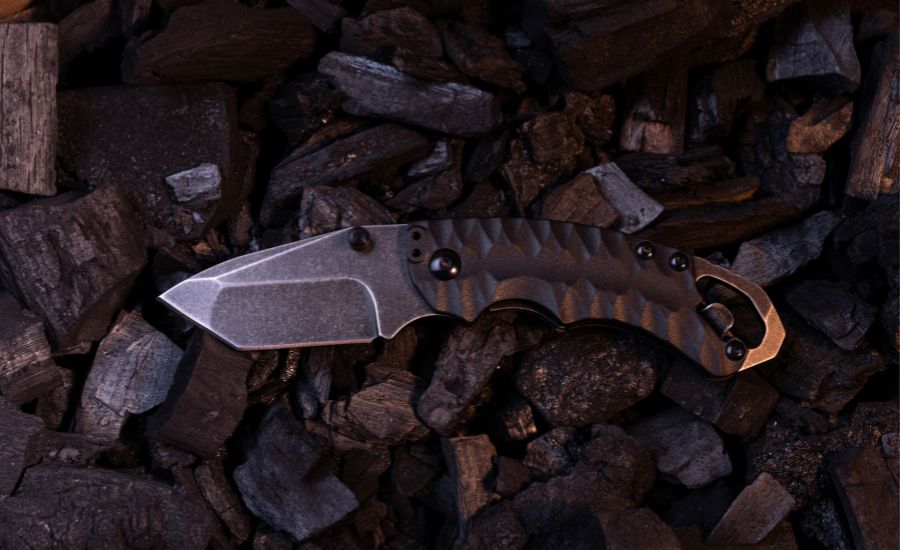
Contents
What is a Tanto blade?
The tip of a Tanto blade is extremely sharp and angular, like a chisel. One of the earliest manufactured knives that contributed to the popularity of this design was the Cold Steel Tanto from the 1980s.
It is possible to say that Cold Steel was the first to use the contemporary Tanto style and is responsible for the blade shape we are familiar with today.
Between 1981 and 1983, the Tanto and Mini Tanto, two variations of the original Cold Steel Tanto, were advertised. The Mini Tanto has a 3.5-inch blade compared to the Tanto’s 6-inch blade. These can be seen in the original advertisement to have the distinctive Tanto tip form, and this may be the first time this design was made for Western consumers.
Although the design and blade shape has altered a little since those early releases, they continue to have the distinctive Tanto blade shape and style. The first Tanto knives were produced in Japan and supplied by Cold Steel in Ventura, California.
The strong tip, premium pommel, good piercing ability, and other unique characteristics of the Tanto blade make it so well-liked and well-known.
These properties make the Tanto blade more sturdy, and durable and boost operating power.
The tip of the Tanto Blade seems pointy and sharp. Sharp edges and a flat grind characterize Tanto points. Materials can be easily stabbed through with the pointed, sharp tip. The blade has a Tanto point and a trailing edge.
The blade has a straight edge and appears to be flat. Tanto Blades have two sharp edges. You can therefore employ both for your task. At a non-curved angle, the front edge seems unsharpened.
Tanto blades come in a variety of designs, giving each one a distinctive appearance. Some have a straight edge, others have curved edges, some have single or double bevel blades, and some could have grooves.
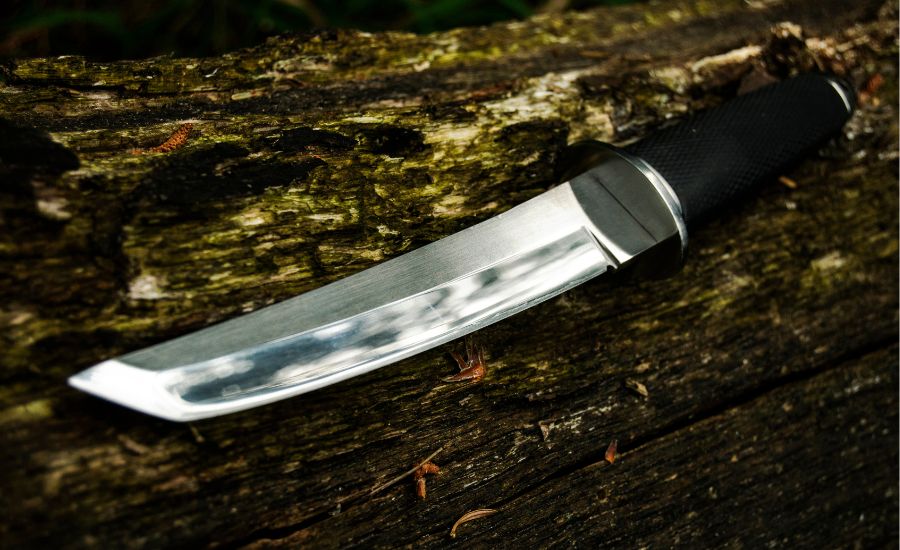
Tanto blade design
Tanto blades are mostly made with armor-piercing as their primary objective. They are excellent for piercing through dense and tough materials because of their razor-sharp points. The length of Tanto blades is between 10 inches and 12 inches. The tip of the Tanto blade features a thick point that is packed with metals to make it stronger.
The blade’s strong point enables us to effortlessly cut through tough materials without exerting additional effort. To boost overall strength and soften the spine, the Tanto blade is variably hardened. The Tanto blade’s traditional appearance is provided by the Hamon that is generated during the hardening process.
Modern Tanto Knives
Often the term “modern Tanto” refers to the Westernized Tanto or American Tanto. With the popularity of the modern tactical knife, this is a more recent blade form. The Westernized Tanto blade pattern was influenced by Japanese knives and is reminiscent of vintage Tanto or katana designs.
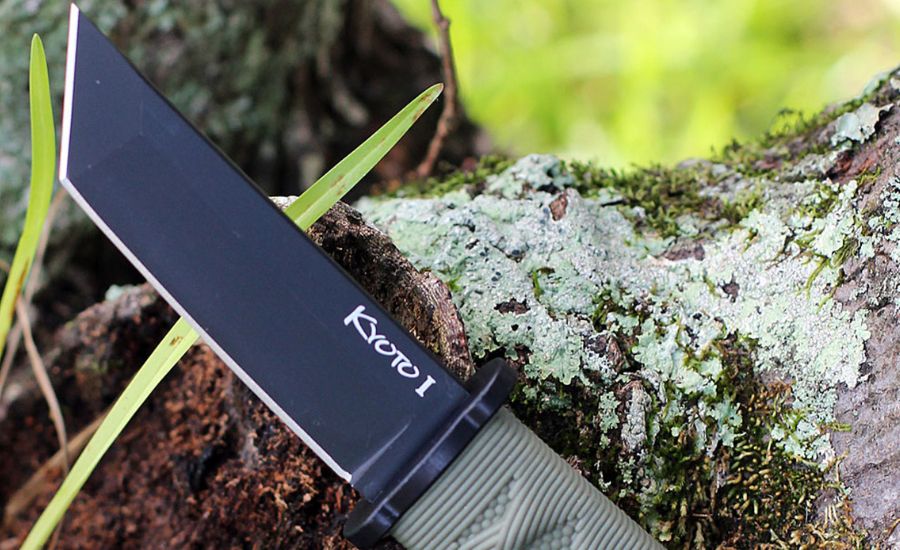
Tanto blade functions
Tanto blades were traditionally used for close-quarters fighting and as a hold-out weapon. They are intended to be used in confined spaces and to pierce armor when necessary.
Numerous individuals may be perplexed as to why the Tanto style is so well-liked given that these classic combat applications seldom exist today. One of the things that contribute to the blade’s appeal is undoubtedly its general design and appearance.
Yet, the blade’s primary purpose must still be clear in its overall function.
There is no denying that the blade’s shape makes it ideal for piercing and poking tasks. This also applies to modern domestic duties like disassembling boxes. Tanto blades are also excellent at cutting through tougher materials. If you need to remove stickers or tags from items, you can utilize the chisel tip style as a scraper or chisel.
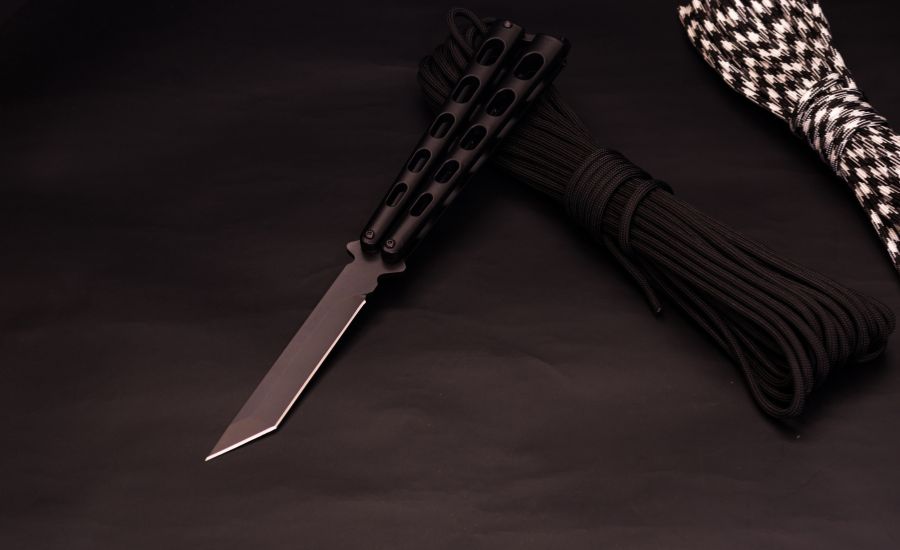
What is the benefit of a Tanto blade?
Let’s take a look at why this knife is so popular.
Tip strength
This seems quite evident, but the tip has a lot more reinforcement than a drop-point or spear-point because of the triangular form that leads to it. This actually shouldn’t be a major consideration unless you want to frequently stab through car doors or use your knife as a shovel.
A Tanto knife is ideal for you if you want to use your knife unconventionally. The Tanto blade shape design lends itself nicely to stabbing and prying, rendering it helpful for a variety of different tasks that the majority of knives definitely couldn’t accomplish. When it comes to functionality, Tanto blades are without a doubt the best.
Design
The blade has a traditional and beautiful feel to it thanks to its Japanese design. The point and spine of the Tanto’s blade are precisely in line with one another, displaying the accuracy of conventional Japanese craftsmanship.
Serviceability
Tanto blades often have two flat edges with little to no bend, so if you’re out in the field without any sharpening tools, it’s simpler to obtain a functional edge. Even though they frequently receive a poor reputation for being impractical, this is one of the main benefits of Tanto blades.
It is clear from the drawbacks listed below that this does not necessarily imply that sharpening a Tanto-edged knife is simple. The glass edge of your vehicle’s windows or a sharpening stone you brought along can be used to sharpen a knife while you’re out in the field.
Another option is to use a flat stone you may find outdoors to sharpen it into a workable edge.
Pommel
The Tanto knife’s pommel is tapered and composed of steel. It is designed to endure the harshest force while still producing the best outcomes. A Tanto knife doesn’t need to use much force to cause a fatal injury.
Outstanding quality
The quality of the Tanto knife is one of its key advantages. The original Japanese Tanto knife is incomparable to the American Tanto knife, despite the American Tanto knife’s fierce rivalry. It is constructed with the best steel that is readily accessible, and the artisans never compromise on employing the most up-to-date methods.
China has also gotten involved in the competition since it can make cheap knives of exceptional quality. Despite this, consumers still like purchasing the Japanese version because Tanto knives have a long history dating back hundreds or even thousands of years.
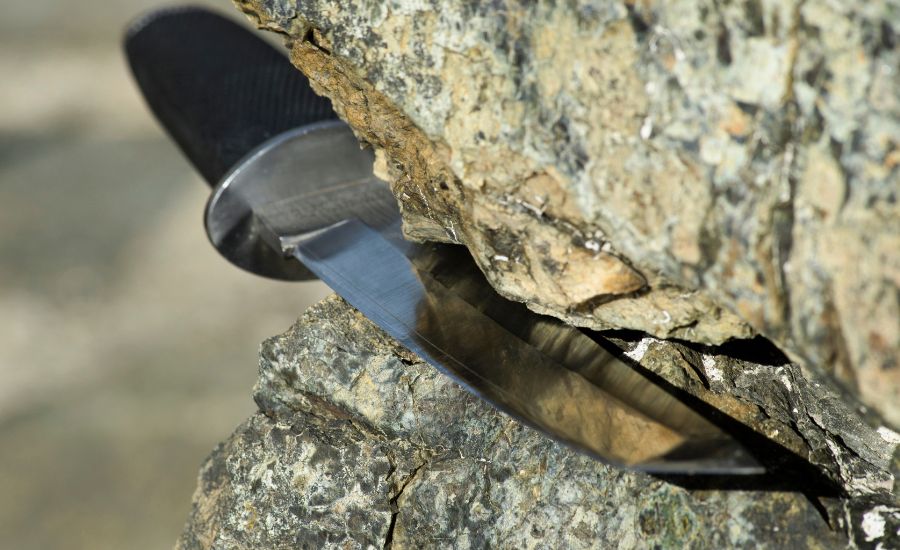
Disadvantages of a Tanto blade
Skeptics still see flaws. Let’s look at them too.
Sharpening
Since you have to alternate between which bevel to sharpen occasionally, having two distinct bevels makes it appear like you are sharpening two knives rather than simply one continuous edge. Since most Tanto knives have relatively little recurve in the blade, it is easy to maintain a consistent edge on them.
The difficulty of slicing
As a result of the Tanto’s two flat sides and nearly nonexistent belly, cutting through difficult materials won’t be as simple when compared to a spear-point or drop-point blade. This means that slicing tasks are going to be particularly difficult.
Tanto blades aren’t very practical
This relates to the Tanto blade benefits listed in point number one. A different type of blade with stronger slicing abilities is far more useful for daily usage if you don’t intend to stab anything or anyone.
Using a drop-point knife with a similar level of sharpness to slice an orange is a lot simpler than sticking your orange into your mouth at lunch every day.
Why should you consider spending money on a Tanto knife?
Samurai used Tanto blades which is a short sword in close combat, and Cold Steel produced a replica of this Tanto blade in fixed-blade styles for tactical application in the same fashion.
A small, 2.5-inch folding Tanto is just as likely to be seen on the street as a tactical Tanto is to be seen in a tactical situation because the form has gained popularity as an everyday carry item in recent times.
One of the major benefits of this pretty modern variety of smaller Tantos is that broad tip which resembles a chisel point. Chisel tips are widely known to be more powerful and durable than most other blade shapes. Tanto knives are advantageous for piercing and puncturing tasks because of their entire form. The ability to pierce armor was treasured by the Samurai.
Even so, you may utilize it in other circumstances, including opening packages or making a new hole in your leather belt. While some people criticize the Tanto design for being uncomfortable for slicing tasks, regular pocket knives could nevertheless perform such tasks properly.
After all, the Tanto shape is what makes it most obvious and is what gave rise to the Tanto fashion trend. That angular blade is simply beautiful to look at. A pocket knife that you intend to use regularly should be useful, yet additionally, be visually appealing enough to make you want to carry it in your pocket.
Besides, it is a dazzling item to flaunt to your friends, and it is great.
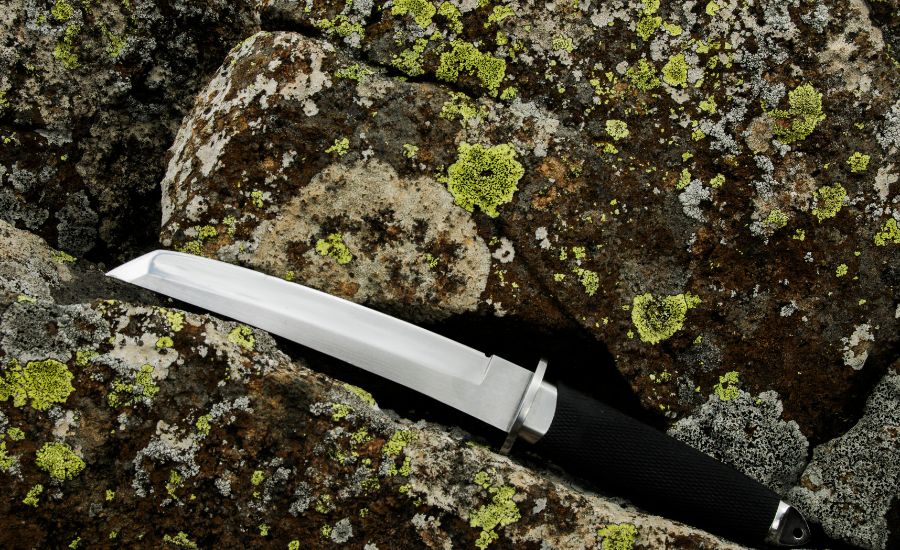
Tanto in comparison to other common blade shapes
Tanto versus Drop Point blades
Contrary to what most people would want to believe, these have a lot more in common. The area surrounding the tip is where there are any differences. While Tanto blades and drop point blades both have similar grinds, the Tanto blade is somewhat better for penetration while the drop point is significantly better for carving and whittling.
These two, in my opinion, are the best options for a modern EDC. To be honest, the decision depends on individual taste and willingness to spend more time sharpening the Tanto blade, since the drop point is undoubtedly simpler to keep sharp.
Tanto versus reverse Tanto blade style and Drop Point
The reverse Tanto blade style is a relatively modern design that has lately gained popularity. The only true difference between the reverse Tanto blade and a Drop Point in terms of performance is the blade shape towards the tip, which makes it superior for piercing. As a result, across almost all applications, the reverse Tanto and drop point will function similarly.
The reverse Tanto blade style and blade shape do eliminate the need to sharpen two edges individually and do provide what some claim is the greatest of both worlds between a Drop Point and a Tanto. But, in practical application, it can be challenging to tell the distinction between them. Both are superb and it is a matter of taste.
Tanto versus Clip Point
It is another strong contender when it comes to piercing power. The Clip Point is comparable to the Tanto in terms of its overall functional purposes but embodies a similar concept in piercing, meanwhile the tip has as little as possible to be low friction yet manages to be fairly strong.
Overall, the Tanto blade shape makes the western Tanto slightly stronger and more dependable in heavy-duty piercing and stabbing circumstances, regardless of material and steel type.
Tanto versus Wharncliffe and Sheepsfoot blades
Relatively new blade shapes and blade styles are proliferating, and these blade styles are among the more recently common ones. Even though each of these is unique in its designs and intended use, because of their specific nature and use, they are frequently compared to Tanto blade knives.
Several individuals would argue that the reverse Tanto and the Sheepsfoot blade type are merely minor modifications of one another.
The reverse Tanto and sheepsfoot blades both have a backward-sloping tip edge, but the latter often possesses a more rounded tip. The distinctive blade shape and aesthetic appeal are a result of its backward-sloping, rounded edge.
Tanto versus Trailing Point blade
Although there are some very noticeable alterations between the traditional Tanto and the Westernized form, the trailing point is essentially what the traditional Tanto was. The trailing point is undoubtedly a great slasher, but it is weak as a whole in terms of both piercing ability and horizontal force.
What is the perfect blade length for a Tanto?
Tanto blades typically range from 6 inches to 11 inches. Go ahead and give it a shot if you are sure that you can handle using long swords. Yet, the majority of individuals choose Tanto knives over other combat knives because they’re smaller and simpler to conceal. Ensure that the blade you buy is of good quality and durability.
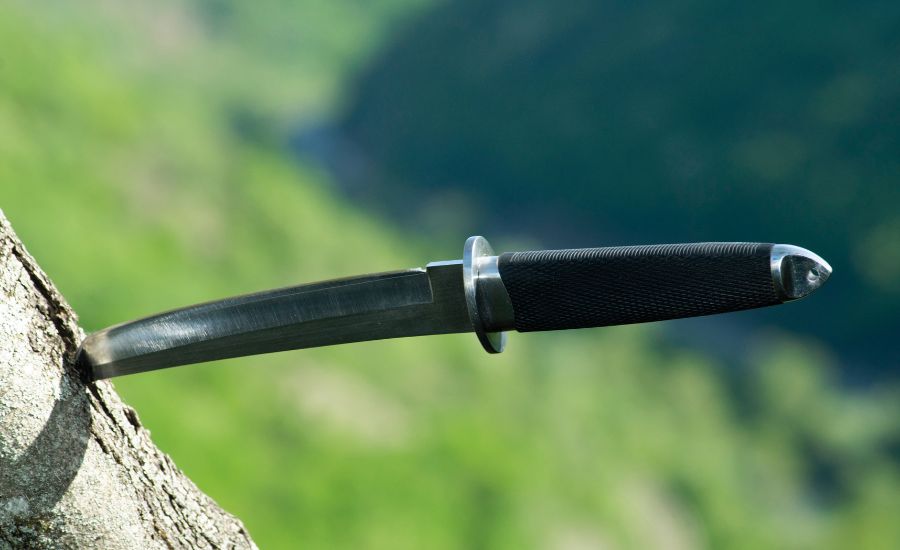
Tanto blade sharpening techniques
Tanto blade sharpening can be challenging for novice knife users. The blade shape and blade style frequently serve as a deterrent to novice blade owners who attempt to sharpen them. Yet, just like with any pocket knife, excellent skill and some training will help you maintain a sharp edge and get the most out of your blade.
While sharpening a Tanto blade, it’s important to avoid excessively removing material from the tip and to adjust the angle at which both edges intersect. Sharpening the major long edge initially is the recommended course of action.
Also, halt your stroke when the tip gets near the final portion of the stone to avoid rocking the blade and rounding the tip.
To maintain a straight edge, it is essential to keep the blade at the correct angle and parallel to the sharpening stone. Sharpening the tip edge section comes after sharpening the main flat edge. But, as was already indicated, certain individuals prefer this edge at a more acute angle, so bear that in mind when choosing your sharpening technique.
Always ensure to maintain continual contact with the sharpening stone from corner to tip to sharpen the tip section. The blade shape and design can be compromised by the ease with which the blade is rocked and the tip edge is rounded off.
The blade’s efficiency won’t likely be affected, although it is intended for both the tip edge and the core blade part to be straight. It is apparent that if you are patient and concentrate on accuracy, sharpening a Tanto blade isn’t particularly challenging.
What is the best use for a Tanto blade?
Modern Tanto blades possess powerful tips, just like the ancient Tanto short swords, making them excellent for piercing cuts. Stabbing is the knife’s true strength. It’s quite easy to penetrate and pierce with that powerful piercing tip.
Tanto blades are therefore common in a majority of combat knives. They suit the tactical knife idea and have a great aesthetic, but they may also be utilized for self-defense or martial arts.
Is a Tanto blade good for everyday carry?
Yes, it is. Tanto blades are also common in Everyday Carry (EDC) knives. They have an exotic appearance and are undoubtedly capable of performing daily activities like opening mail, helping with meal preparation, and performing odd jobs like cutting ropes and other supplies.
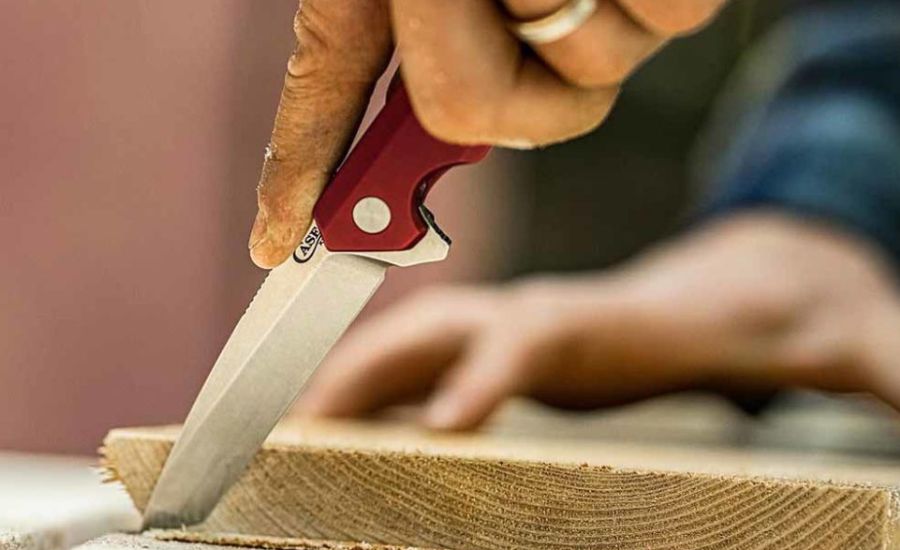
Conclusion
Sometimes people look for knives simply to perform a few particular jobs. The Tanto blade is the ideal option if you want a knife that can readily cut through thick and difficult materials.
Many love the Tanto blade shape, its aesthetics, and how it feels at the tip. To accomplish any kind of work, you should carry a Tanto blade.
Tanto knives make great blades for daily use. Simply get a pocket-sized knife that’s versatile enough to cut letters, open meat, and slice fruits. And the greatest part is that these knives are reasonably priced. You don’t have to spend an excessive amount of cash on fancy knives. Select the one that best serves your needs.
The Tanto knife was first designed as a weapon but over time has changed to become a multipurpose tool. Users can choose from a variety of designs today based on their interests and needs.


